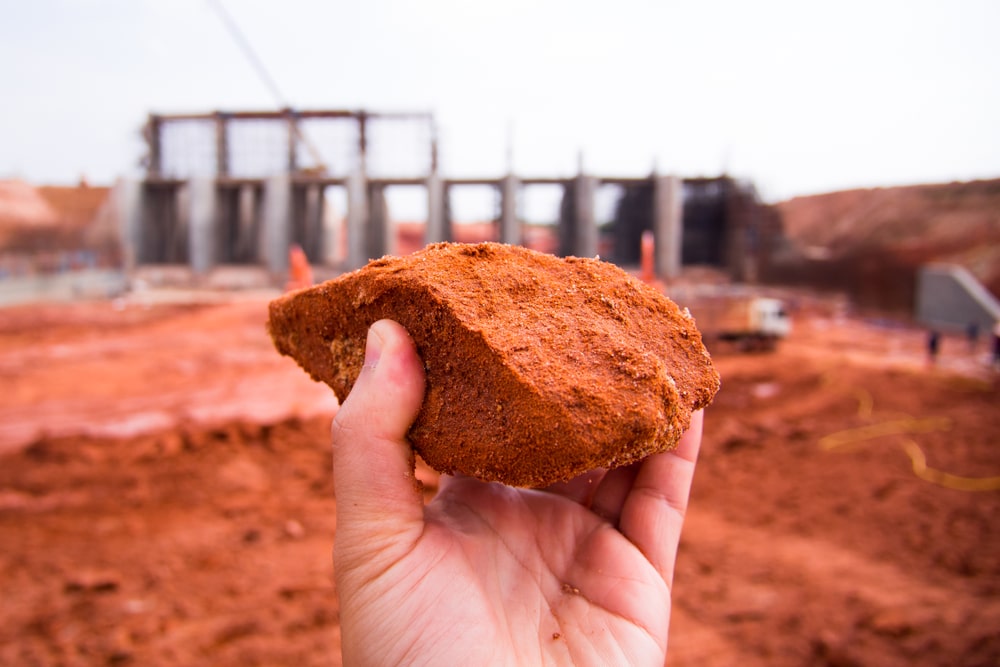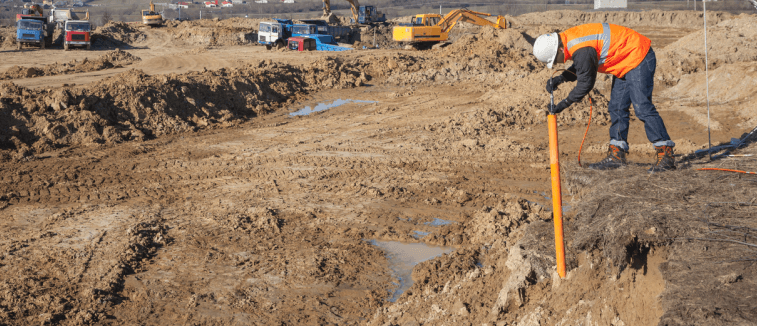Leading Geotechnical Engineers for Cutting-Edge Soil Analysis and Foundation Design
Leading Geotechnical Engineers for Cutting-Edge Soil Analysis and Foundation Design
Blog Article
Understanding the Necessary Role of the Geotechnical Market in Modern Construction Projects and Infrastructure Advancement
The geotechnical sector is a cornerstone of modern-day building and construction and framework growth, offering essential understandings right into soil behavior that directly influence task end results. With innovative soil analyses and ingenious design services, geotechnical professionals not just make certain architectural integrity but likewise address sustainability problems amidst developing ecological requirements.
Value of Soil Evaluation
Dirt analysis plays an essential role in the geotechnical market, working as the structure for notified decision-making in building and construction tasks. Accurate dirt analysis is essential for establishing the viability of a site for various types of structures, consisting of household homes, commercial buildings, and bridges. By examining dirt structure, dampness, density, and strength web content, designers can expect prospective difficulties and reduce risks connected with ground instability, erosion, and settlement.
The analysis process typically involves a series of tests and monitorings that supply essential details about the subsurface conditions. This information educates the design and building and construction procedures, guaranteeing that structures are developed on strong ground with ample support. Understanding the dirt account makes it possible for engineers to choose appropriate building approaches and materials, optimizing resource usage and decreasing costs.
In enhancement to ensuring structural integrity, soil analysis adds to ecological sustainability. By recognizing possible contamination or unfavorable impacts on surrounding environments, designers can apply approaches to shield these all-natural resources. In general, detailed dirt evaluation is essential in the geotechnical field, underpinning the safety, performance, and ecological duty of building and construction projects.
Trick Geotechnical Strategies
A selection of vital geotechnical methods are employed to analyze and enhance the stability and performance of building sites. One fundamental method is soil tasting and screening, which allows engineers to figure out the physical and chemical homes of the ground. This information is critical for making notified choices pertaining to foundation style and building approaches.
Another essential method is site characterization, which involves the in-depth evaluation of soil and rock conditions with approaches such as borehole exploration and in-situ screening. Strategies like Standard Penetration Examinations (SPT) and Cone Infiltration Tests (CPT) supply important data on soil strength and stratigraphy.
Ground renovation techniques, such as soil stabilization and grouting, are likewise essential in improving the load-bearing ability of weak dirts. These methods can minimize settlement and enhance total site problems.
Furthermore, slope security evaluation is vital for identifying potential landslide dangers and making sure the safety and security of excavations. This evaluation often employs numerical modeling and limit balance methods to predict dirt behavior under numerous conditions.
Including these geotechnical techniques into construction planning not only enhances job outcomes yet likewise makes certain the long-lasting sustainability of facilities growth.
Effect On Construction Safety

Furthermore, effective geotechnical engineering includes carrying out mitigation methods for identified risks. This may include soil stablizing methods, maintaining frameworks, or drain systems to minimize hydrostatic pressure. By resolving these elements, construction groups can minimize the possibility of crashes and enhance employee security.
Additionally, constant tracking of website problems is important during building and construction. Geotechnical instruments can offer real-time data regarding ground movement and stability, enabling timely interventions when necessary.
Fundamentally, the geotechnical industry plays a critical role in guarding building and construction jobs. By focusing on ground honesty and using strenuous assessment methods, the geotechnical industry not only safeguards the labor force but also adds to the durability and integrity of built infrastructure.
Sustainability in Geotechnical Practices

Additionally, geotechnical designers are currently employing advanced innovations, such as geosynthetics, which improve soil security while decreasing the volume of product called for. This not only conserves resources however also leads to much less waste generation (geo tech engineer). The article source combination of sustainable style principles into geotechnical engineering urges using sustainable power resources in building and construction procedures, further decreasing carbon exhausts
By carrying out these analyses, geotechnical specialists can establish strategies that alleviate negative impacts, guaranteeing conformity with ecological regulations. In general, the focus on sustainability within geotechnical practices not only contributes to the longevity and durability of infrastructure but additionally promotes an accountable method to land and resource administration.
Future Trends in Geotechnical Design
Advancement is driving the future of geotechnical design, as arising methods and modern technologies improve the market. The integration of innovative data analytics and artificial knowledge is established to transform site examination and danger assessment, enabling designers to make even more informed choices based on real-time data. The usage of geosynthetic materials is getting grip, offering sustainable services that boost dirt security and reduce environmental effect - geotechnical engineers.
An additional significant trend is the fostering of automated and robot systems for surveillance and building procedures. These technologies not only boost accuracy however also improve safety and security by reducing human involvement in hazardous atmospheres. Additionally, the implementation of Structure Info Modeling (BIM) in geotechnical layout helps with boosted cooperation amongst stakeholders, maximizing project shipment and decreasing expenses.
As climate modification presents brand-new obstacles, the market is significantly concentrating on durability and versatility in style techniques, making sure facilities can hold up against severe climate occasions. The recurring trend toward sustainability will certainly drive advancement in green products and techniques, aligning geotechnical engineering with more comprehensive ecological goals. Collectively, these patterns will certainly form an extra effective, sustainable, and durable geotechnical landscape for future projects.
Verdict

The geotechnical sector is a foundation of modern-day building and construction and facilities site link advancement, offering critical understandings into dirt actions that straight influence job end results. geo tech engineer.Dirt assessment plays a critical role in the geotechnical sector, serving as the structure for notified decision-making in building and construction tasks. On the whole, complete dirt evaluation is crucial in the geotechnical area, underpinning the safety and security, effectiveness, and environmental duty of building projects
Building safety and security is considerably affected by geotechnical techniques, as the security and integrity of the ground straight influence the overall safety of a building and construction site.In conclusion, the geotechnical sector is indispensable in modern-day construction and infrastructure advancement, offering critical evaluations useful reference that make sure architectural honesty and safety.
Report this page